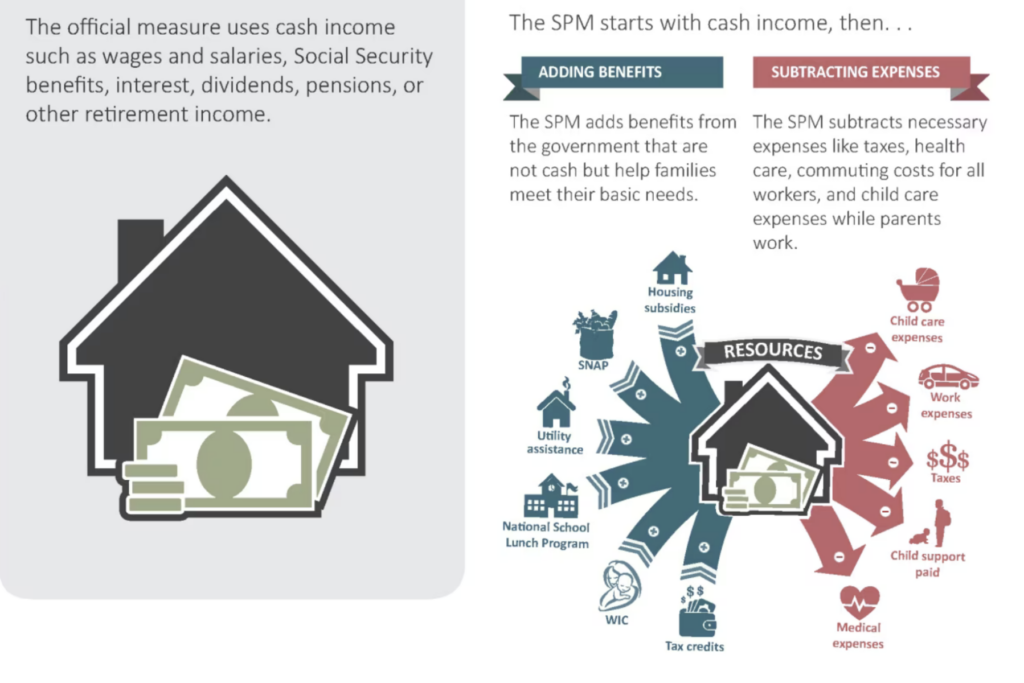@TBPInvictus here;
Let’s cut to the chase: “America’s Enormous Math Mistake” is a popular video on YouTube that claims the poor are much less poor than the official statistics suggest because those statistics ignore government welfare like Food Stamps and Aid to Dependant Children and lots of other safety net programs. If this were true, it would mean we have been measuring income inequality incorrectly (perhaps wealth inequality as well).
It is untrue.
Since 2008, the Census Bureau has included government transfers in its Supplemental Poverty Measure. It took 0.77 seconds to find 253,000,000 results on Google showing exactly how the government measures this.
Call it ” ‘America’s Enormous Math Mistake’s Mistake.”
Was this ignorance? Willfull misrepresentation? Sheer stupidity? Or is anything economic Phil Gramm touches simply destined to be a dumpster fire of lies, foolishness, and incompetency?
You may remember Phil Gramm. He’s the (thankfully) former U.S. Senator who said Americans were a “nation of whiners” suffering from a “mental recession.”
In 2008.
This was as the country was sinking into the worst recession since the Great Depression.
Gramm wrote a book that was published last year, “The Myth of American Inequality: How Government Biases Policy Debate.” Phil and his co-authors perform sleight-of-hand tricks to convince you that, hey, income and wealth inequality aren’t nearly as bad as you might think. Who ya gonna believe, me and my our jiggered stats, or your own lyin’ eyes?
Anyway, Gramm’s book was apparently the basis – along with just a bit of perplexing illogic from Dave Ramsey and Cato – for the video below; The essence of the video is this:
Poverty in the US is not as bad as Census would have you believe because Census focuses on money income and the poors get a lot of non-cash benefits, e.g. “many benefits aren’t paid in cash,” and when you factor those non-cash benefits into the equation, the poors are no longer poor! Voila!
(Digression: I must mention it was Ritholtz who made me aware of the video, manipulative bastard that he is, knowing full well that it would trigger me, sending me down a rabbit hole. Owe you one, Barry. But I digress.)
Imagine that. The boneheaded, pencil-necked geeks at Census have been totes unaware of this glaring flaw in their work for all these years. Thank God Phil Gramm came along to set the record straight. Except for the fact that Census is, of course, aware of the exact limitation cited here, and long ago – prior to Gramm’s book and the nonsensical video below – constructed its Supplemental Poverty Measure (SPM), which is neatly summarized in the graphic above. Would you look at that – all the items Gramm gripes about being excluded from the “official” measure are captured in the SPM. It’s almost as if Gramm wasted his time writing a book and its readers wasted theirs reading it. For the record, Census published its first study on the valuation of so-called “in-kind transfer benefits” in 1982.
There’s a good debunking of Gramm’s book by Timothy Noah that can be found here: Phil Gramm Thinks Poor People Have It Too Easy.
I was fully prepared to dig in and figure out exactly how Gramm was manipulating the data to make his point, but apparently he simply either wasn’t aware or didn’t care that Census had, long ago, addressed the deficiencies he cited. In a nutshell, the SPM renders Gramm’s book more irrelevant than it otherwise would have been.
The focus on poverty exclusively is itself a bit of a straw man, as the larger issue is the unarguable hollowing out of our middle class, which goes entirely unaddressed.
Special thanks to Liana Fox at Census for sharing the 40-year history of government transfers as part of poverty measures.
See also:
Alternative Methods for Valuing Selected In-Kind Transfer Benefits and Measuring Their Effect on Poverty
Timothy M, Smeeding
ASA / Census Research Fellow and University of Utah
U.S. Department of Commerce / Bureau of the Census
Technical Paper 50, March 1982
Phil Gramm Thinks Poor People Have It Too Easy
Timothy Noah
TNR / September 21, 2022
Previously:
Quote of the Day: “mental recession” (December 10, 2008)
Phil Gramm: A Deregulator Unswayed (November 17, 2008)
More on the SPM from Census:
Measuring America: How the U.S. Census Bureau Measures Poverty
Supplemental Poverty Measure (SPM)
How the Census Bureau Measures Poverty
Poverty in the United States: 2021
Measuring the Nation’s Social and Economic Well-Being
Supplemental Poverty Measure Visualizations
The Dumbest Video on YouTube


